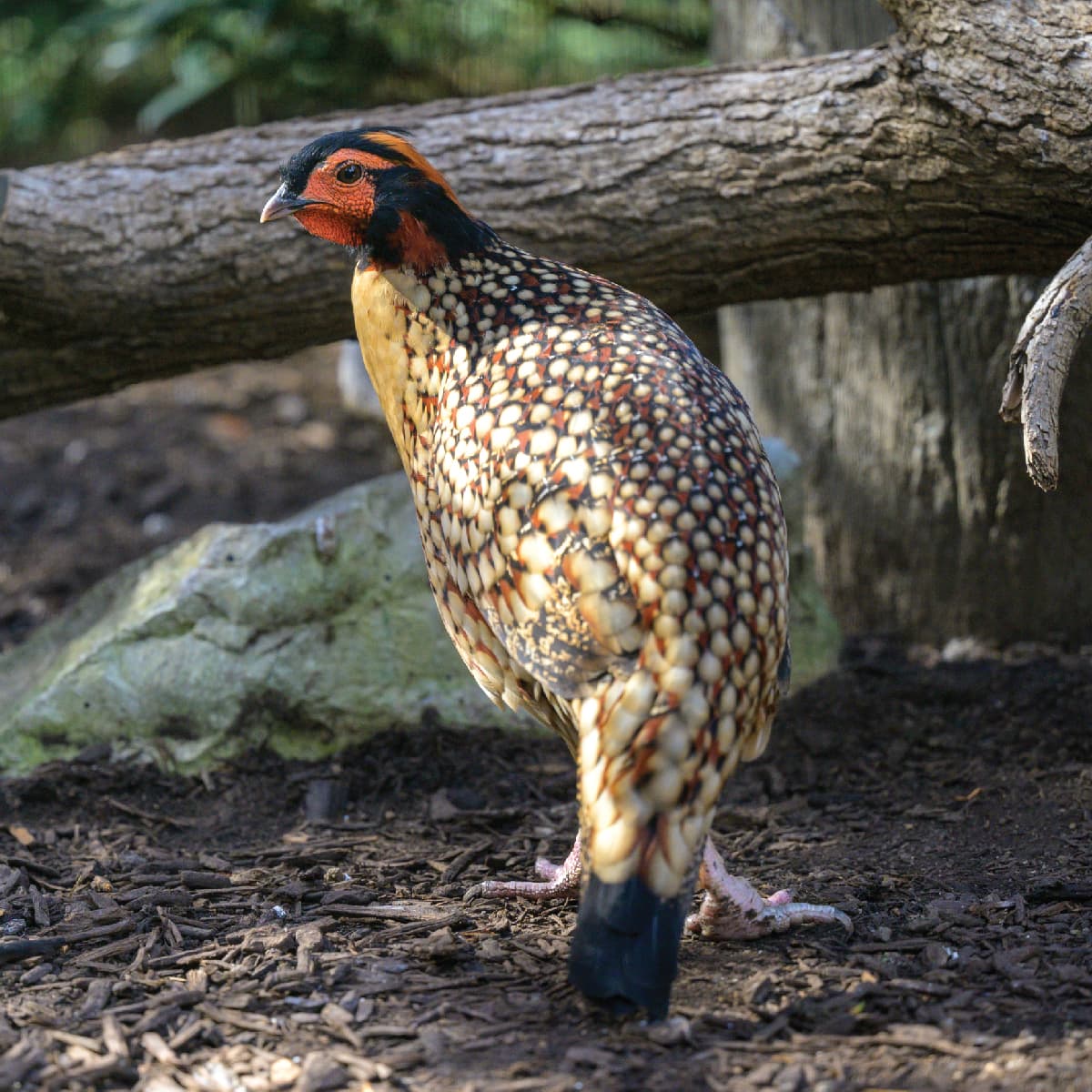
Cabot's Tragopan
Tragopan caboti
Did you know?
- Cabot's tragopans are part of the Phasianidae family, which they share with chickens and turkeys.
- They live in forests in Southeastern China.
- They do not migrate.
- Males have a bright blue lappet on the throat.
- A female will lay two to six eggs per clutch.
Adaptations
Cabot's tragopans have dark brown, black and white colorations that help them camouflage in their dense, forested habitat. They have thick layers of feathers that are insulating from the cold and moisture, which allow them to stay in their habitats all year instead of migrating.
Young and Family
During courtship, the male flashes his colorful wing linings and inflates the bright-colored wattles on his head and throat. They often raise one or two chicks at a time. After hatching, chicks will leave the nest after around three weeks.
Threat Level
- Unknown
- Common
- Near Threatened
- Threatened
- Endangered
- Critically Endangered
- Extinct in the Wild
Threatened
The Cabot's Tragopan faces a high risk of extinction in the wild.
Range
Southeastern China
Habitat
Evergreen forests

We care about cabot's tragopans
The Saint Louis Zoo supports Cabot's tragopans at the Bird Garden. Learn more about how we are helping wildlife around the world.
Find this animal in Historic Hill

SAINT LOUIS ZOO ZONE
Historic Hill
Historic Hill is a lovely stroll through one of the oldest parts of the Saint Louis Zoo. From the 1904 World’s Fair Flight Cage to the Spanish architectural flavor of the 1920s in the Bird House, Primate House and Herpetarium to the finishing touches of our thoroughly modern exhibits, this area of the Zoo has a unique ambiance and a nostalgic history that make it a great destination.

